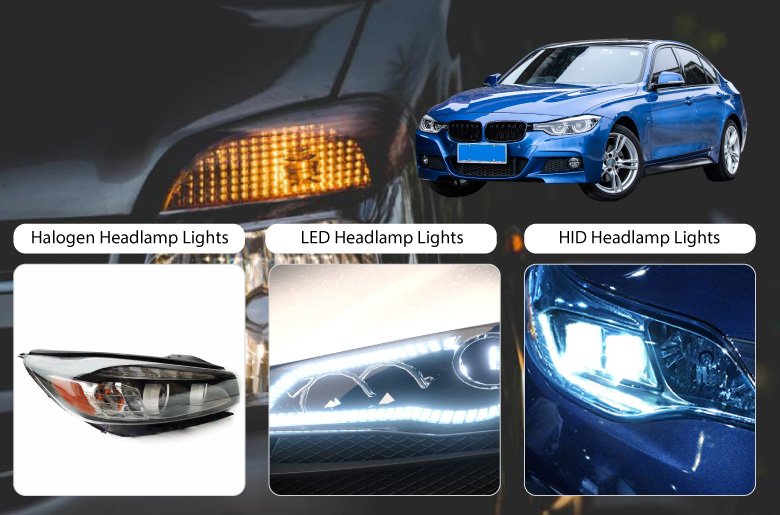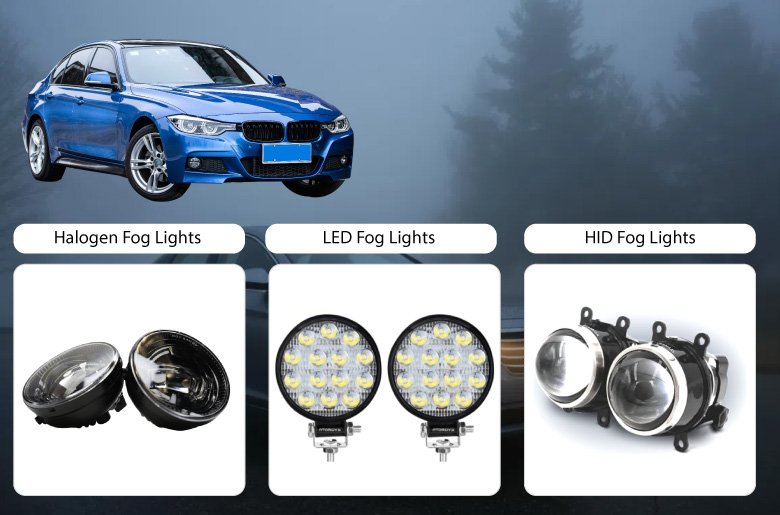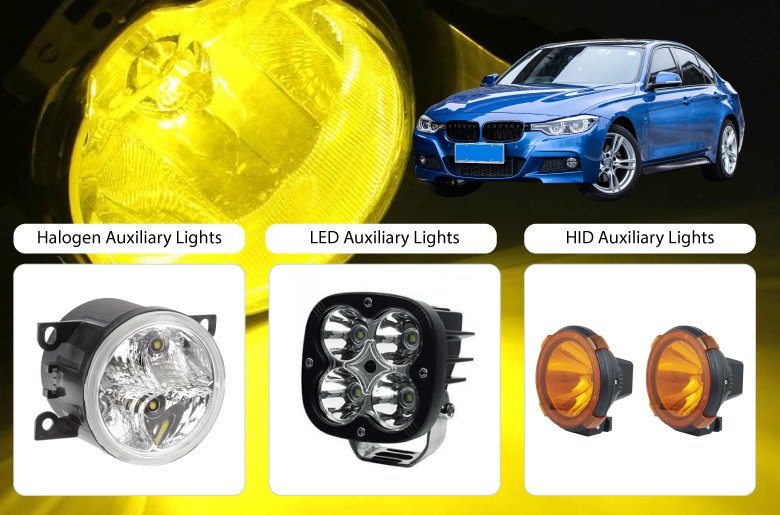Headlamp Bulb Upgrades
Halogen Bulbs:
Bright and cost-effective, our halogen bulbs provide a warm, traditional light output.
Halogen bulbs are the most common type of headlamp bulbs, found in many older and some current model vehicles. They produce light by passing an electric current through a filament enclosed in a glass bulb filled with halogen gas. Halogen bulbs are relatively inexpensive, easy to replace, and provide adequate illumination for most driving conditions.
Some common halogen bulb types include H1, H3, H4, H7, H11, HB3, and HB4. These bulbs differ in the number of filaments, nominal power, and base type. For example, H4 bulbs have dual filaments for high and low beams, while H7 bulbs have a single filament.
Experience the future of automotive lighting with our LED bulbs, offering superior brightness, energy efficiency, and a sleek, modern appearance.
LED (Light-Emitting Diode) headlamp bulbs are becoming increasingly popular in newer vehicles due to their superior performance and efficiency. LEDs produce light by passing an electric current through semiconductor materials, resulting in a bright, focused beam pattern with minimal glare. LED bulbs last significantly longer than halogen bulbs, with an average lifespan of over 50,000 hours.
Upgrade to the intense, crisp light of HID bulbs for a bold, eye-catching look on the road.
One of the main advantages of LED headlamps is their energy efficiency, which can lead to improved fuel economy and reduced emissions. Additionally, LEDs generate less heat compared to halogen bulbs, making them safer and more reliable. However, LED bulbs tend to be more expensive than their halogen counterparts.
Fog Light Installations
Halogen Fog Lights:
Improve visibility in adverse weather conditions with our reliable halogen fog lights.
Halogen bulbs are a traditional choice for fog lights and have been widely used due to their affordability and ease of replacement. They produce a warm yellow light, which is effective in penetrating fog and reducing glare. The light emitted by halogen bulbs is generally softer than that of other types, making it easier on the eyes during prolonged use. However, one of the significant drawbacks of halogen bulbs is their relatively short lifespan, typically lasting around 250 to 500 hours of use. This necessitates more frequent replacements compared to other lighting technologies.
In terms of performance, halogen bulbs are best suited for light fog conditions. They provide adequate illumination for close-range visibility but may struggle in heavy fog or adverse weather.
Despite their limitations, halogen bulbs remain popular due to their lower initial cost and widespread availability. Many drivers appreciate the simplicity of halogen fog lights, which can be easily installed and replaced without specialized tools.
Enjoy the benefits of LED technology in your fog lights, including enhanced brightness, longer lifespan, and a stylish appearance.
LED (Light Emitting Diode) bulbs have gained popularity in recent years as a modern alternative to traditional halogen bulbs. One of the primary advantages of LED fog lights is their energy efficiency; they consume significantly less power while providing brighter illumination. LED bulbs can produce a cooler white light, which enhances visibility and clarity in foggy conditions. Additionally, they have a much longer lifespan, often exceeding 25,000 hours, which means fewer replacements and lower long-term costs.
Another benefit of LED fog lights is their durability. Unlike halogen bulbs, which can be fragile, LEDs are solid-state lights that are resistant to shock and vibration. This makes them an excellent choice for off-road driving or in environments where the vehicle may experience rough handling. However, the initial cost of LED fog lights can be higher than that of halogen options, which may deter some buyers. Overall, the benefits of LED technology, including brightness, longevity, and energy efficiency, make them a preferred choice for many drivers.
Upgrade to the powerful, penetrating light of HID fog lights for maximum visibility and a unique look.
HID bulbs, or High-Intensity Discharge bulbs, are another advanced lighting option for fog lights. They produce a very bright and intense light, often referred to as "xenon" lighting, which can significantly improve visibility in challenging weather conditions. HID bulbs work by creating an electrical arc between two electrodes in a gas-filled chamber, resulting in a bright light output that is much more powerful than that of halogen or even LED bulbs. This makes them particularly effective for use in heavy fog, rain, or snow.
However, HID bulbs come with their own set of challenges. They require a ballast to regulate the electrical current, which can complicate installation and increase the overall cost. Additionally, while they provide excellent visibility, the intense brightness can cause glare for oncoming drivers if not properly adjusted. This can lead to safety concerns if the fog lights are misaligned. Despite these drawbacks, many drivers opt for HID fog lights due to their superior brightness and ability to cut through poor visibility conditions effectively.
To choose the right type of headlamp bulb for your car, consider the following factors:
Bulb Size | Brightness | Color Temperature | Beam Pattern | Longevity | Compatibility
Auxiliary Light Upgrades
Auxiliary lights are additional lighting systems that enhance visibility and safety for vehicles, especially in low-light conditions. These lights are commonly used in various applications, including off-roading, construction, and agricultural vehicles. They can be mounted on different parts of a vehicle, such as the front bumper or roof, to provide broader illumination. The primary purpose of auxiliary lights is to improve the driver's ability to see obstacles, road signs, and other vehicles, thereby reducing the risk of accidents.
There are several types of auxiliary lights available, including LED, halogen, and HID (High-Intensity Discharge) lights. Each type has its own advantages and disadvantages in terms of brightness, energy efficiency, lifespan, and installation requirements. For instance, LED lights are known for their long lifespan and low power consumption, making them a popular choice among vehicle enthusiasts. Halogen lights, while less efficient, provide a warm light that many drivers prefer for its visibility and color rendering. HID lights offer high brightness and a unique color temperature but may require specific fixtures to install properly.
Halogen bulbs are a type of incandescent light that uses a halogen gas to increase brightness and lifespan. These bulbs are commonly used in vehicle headlights and auxiliary lights due to their ability to produce a bright, white light that closely resembles natural daylight. The halogen gas recycles the tungsten filament that evaporates during the bulb's operation, allowing halogen bulbs to last longer than traditional incandescent bulbs. Typically, halogen bulbs have a lifespan of around 600 to 1,000 hours, making them a reliable choice for everyday use.
One of the key benefits of halogen bulbs is their affordability and ease of replacement. They are widely available and can be installed in most vehicles without the need for specialized equipment. However, halogen bulbs are less energy-efficient compared to LED and HID options, consuming more power and generating more heat. This heat can lead to increased wear on the bulb and surrounding components, necessitating careful handling during installation and replacement.
LED (Light Emitting Diode) bulbs have gained immense popularity in automotive lighting due to their energy efficiency and longevity. Unlike halogen bulbs, LED lights consume significantly less power, which translates to better fuel efficiency for vehicles. They can last up to 50,000 hours or more, making them a cost-effective solution in the long run. LED bulbs produce a bright, focused light that enhances visibility, especially in dark or foggy conditions. The compact size of LEDs also allows for versatile installation options, enabling them to be used in various auxiliary light configurations.
Another advantage of LED bulbs is their durability. They are resistant to shock and vibration, making them ideal for off-road and rugged environments. Additionally, LED lights typically produce less heat compared to halogen bulbs, reducing the risk of damage to the vehicle's electrical system. However, the initial cost of LED bulbs can be higher than that of halogen options. Despite this, their long lifespan and low energy consumption often justify the investment for many vehicle owners seeking reliable and efficient lighting solutions.
HID Auxiliary Lights:
HID bulbs, or High-Intensity Discharge bulbs, are known for their exceptional brightness and efficiency. They work by creating an electric arc between two electrodes in a gas-filled chamber, producing a bright, white light that is significantly brighter than halogen bulbs. HID lights are often used in high-end vehicles and for off-road applications where maximum visibility is essential. They can produce up to three times the light output of traditional halogen bulbs, making them ideal for nighttime driving and challenging weather conditions.
However, HID bulbs require specific fixtures and ballasts for proper operation, which can complicate installation. They also have a shorter warm-up time compared to halogen and LED lights, meaning they take a few seconds to reach full brightness. While HID bulbs offer superior illumination, they can be more expensive to install and replace. Additionally, their intense brightness can cause glare for oncoming drivers if not properly aligned, which is a consideration for vehicle owners when choosing lighting options.
Ready to transform your car's appearance with our lighting solutions?
Contact us today to schedule an appointment or request a free quote. Let us help you achieve the look you desire for your vehicle.







